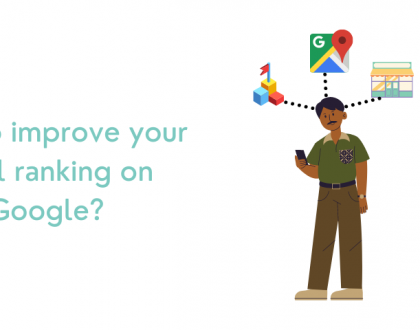Everything You Need to Know About SEO Forecasting

8 Min Read
Forecasting for SEO can be a double-edged sword. If done well, and understood, it can be powerful, but if conducted badly, it can be very damaging. With so many factors and changing variables within SEO, forecasting SEO can be very difficult to predict.
It is typically inaccurate and highly dependent on the industry, vertical, and the level of involvement you have in the planning of a company’s internal efforts.
The guiding principle here is to understand the uncertainty of the effective environment. Be like a tree, know what direction you are growing, but you must be willing to adapt on the way.
We have covered topics about SEO forecasting on how to get it right and how to use third-party tools like SEMrush for forecasting. In this piece, we are going to cover every aspect of SEO forecasting that you need to know about before planning and executing your forecast model. Let’s clear some basics first, shall we …
What is SEO Forecasting?
It is essentially a process of determining what results in SEO can bring to your business directory online. In a more granular way, it is just like previewing the potential ROI. It allows you to provide reasoning and justification to your client for the organic search insights and data you bring to the table. Think about it, the past predicting the future is often a much better indicator of outcome, than guessing at an unknown future with thousands of unknown variables.
Adding more to that, the main idea of determining the ROI of SEO is …
For You to See Through the Inefficiencies in Your Current Process
Results from SEO are unpredictable. Creating goals for your campaign may not be straightforward, and you would wind up getting questioned about each and every decision or suggestion regarding your strategy. But when you deep dive into understanding the projections, the more you can find the root cause of your inaccuracies and the more you can improve your strategy.
For Nailing Your Sales Pitch
SEO forecasting can do a lot more good for sales or predict the future impact for your client. If you’re at an agency level, most prospects that approach your service want to know when they will be an industry leader and in what time frame will they be able to beat their competitors. If you’re correctly able to define the weaknesses their business carries by forecasting, you can go about with that sales pitch for an increased budget or shift in strategy.
… which in turn would be Helpful for Clients to Get a Budget Sign-off from their Bosses
For sure. Just like how you pitched the idea with data-backed proof, they will have the same ability to justify the changes that need to be done in terms of budget or strategy. It would be a win-win for everyone involved in the activity.
While many may not find this relatable, here’s what we follow.
There are two levels of forecasting, one that is client-facing and one that is internal. The internal one is aimed at what we feel the results would need to be award-worthy and we set all our internal expectations around that. The client-facing is agreed with the client & still aggressive but quite often a margin lower than the internal targets.
Are First-Party Tools Enough for Your Forecast? Think Again
We agree with the fact that the primary resources to extract data for your forecast are first-party sources like Google Search Console and Google Analytics. This is the perfect place to look for an accurate estimate for your website or page.
But, competition is a factor to consider as well when determining the ROI for your campaign. SEO isn’t a game to be played alone. What you ought to know is how you’re performing relative to your competitor’s performance. If your competition is outscoring you in rankings and conversions, it will impact your strategy and budget to an extent.
The only way to peak into your competitors is by using third-party sources, which is a given. Our go-to software is SEMrush which we laud for its amazing user experience, an abundance of data not limited to only SEO, and brilliant reporting features. In fact, we have covered it in-depth, click here and give it a read …
3 Basic Methods for Projecting Growth
Every SEO has their own method to work out figures for estimating the growth potential, but we can broadly classify it into 3 groups:
Based on the Person’s Experience
It is kind of a gut feeling which is strictly dependent on the professional’s experience. It can be useful for making not-so-significant decisions but clearly should be considered for critical ones. This type of prediction is not particularly valuable for making official business decisions as it is linked to the case and context that the estimations are being made under.
Based on CTR from Ranking Positions
Ranking data is used to estimate an increase in keyword positions over time. Many tools use this basic method which depends on modeling traffic from click-through rates from ranking positions. There are advanced techniques including many other factors such as competition, seasonality, events and may provide a complete growth figure or more complex increase curves.
Based on Historic-Traffic Data
This takes into account the market impact, seasonal changes of the historical data, and estimate projections from this piece. According to us, this is the most accurate way to forecast which is often difficult to predict, honestly. But, if it is executed correctly, this method can prove to be a great portrayal of the impact your proposed activity can make.
Is Forecasting an Easy Job?
Well, we gave you a hint at the beginning of this article itself. In our previous article, we spoke about the different factors that influence your SEO performance that involves historical trends, seasonality changes, events, etc. Let’s revise it once more here …
Factors that affect SEO forecasting
- Base Forecast
The base forecast is basically the portion in your data, where you begin building an accurate prediction or where you stop. In terms of numbers, it is often the mean for every data point in your charted data.
2. Historical Trends
Unearthing your past data and performance at that point would be the best way to estimate growth your potential and judge accordingly. Monthly traffic data of at least 2 years needs to be pulled for a comprehensive view. However, you need to take into account only the recurring events and the atypical events would be counted as outliers that could be safely canceled.
3. Seasonality
Seasonal trends have a due impact on your traffic number especially if you’re in the business of selling seasonal products or services. For this, however, you need to collect a bigger pull of data that is of at least 3-4 years and observe the consistency in trends. Of course, non-recurring events shouldn’t be considered.
4. Growth
Growth is an essential component of a successfully running business. But, there needs to be a proper framework for your development schedule by keeping components of industry competitiveness, past experiences of algorithm updates if any, in mind, and layout your projections.
5. Events
Just as how you took into account the impact of your historical events, you need to take into account any upcoming events that would impact your traffic. This could be as simple as rolling a great piece of content for your blog that could give a boost to your traffic by x%.
These five are the basic factors every forecasting model requires. But unfortunately, in reality, the process is not clear-cut all the time. It’s a part of a complex system where-in the variables are bound to shift constantly and you sort of have to adapt to it every time.
So what’s the solution?
Well, if you ask us, you need the complex system to work for you and not get worked up by the system. You need to have an in-depth understanding of how it works and a clear view of the steps involved which needs different levels of knowledge and expertise or the ultimate consequences are going to be nasty.
And additionally, there’s a layer to consider; apart from knowing the various properties of this system, we also need to give due importance to the limitations of the method you choose and our own limited abilities as a human beings if sheer accuracy is what you and your clients aim.
When presenting or delivering a forecast, the following caveats should always be mentioned:
- It’s vital you clearly define where the client’s responsibilities are in achieving the forecast.
- Explain that the forecast is based on current circumstances, both win the client and in search.
- Clearly explain your assumptions – namely that you’re taking the CTR data and search volume as truths, and assuming these will remain as they are
- Set a forecast review each quarter to ensure you’re tracking progress and setting goals accordingly
- Explain that your forecast is based on the current roadmap. For example, unexpected changes in PPC strategy will have an impact on organic.
Additionally, huge market changes that have a global impacts such as economic crashes or a pandemic can direct your forecast more towards inaccuracy. Hence, it is always wise to be mindful of these unpredictable changes and predictable factors of risk as well.
Conclusion
Every stride you take in your business has got something new for you to learn. The most exciting part of SEO is you get to uncover problems and fix them with a proactive approach. It’s simple: if you’re right, you need to ask yourself what got you to the right path; if you’re wrong, you again need to analyze where you went wrong and pivot.
In our case, we know the strategies, the plan, our ability to affect change, and the likelihood of success based on previous experience with similar scenarios.
And, you have got our back if prompt and smart SEO Forecasting Services is what you need for your business. We have a collective experience of 9 years and would be more than happy to serve you with the knowledge we have gained from our practice.
Contact Us Today and Get to Know the Indian Marketers!
Recommended Posts

How does local SEO help your website rank better on Google?
March 11, 2022

Why Your Website not visible on Google? Find out
March 7, 2022

